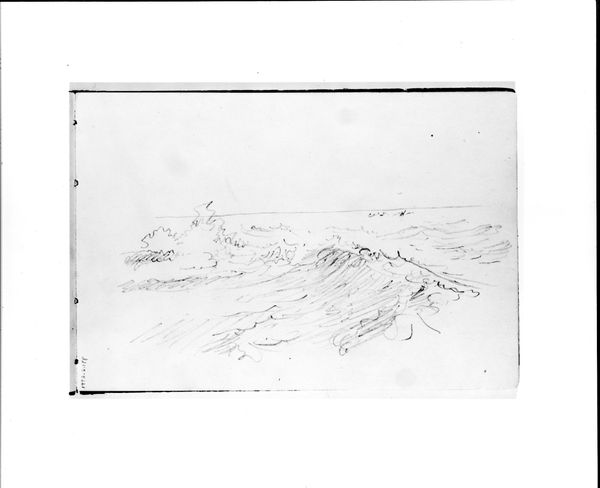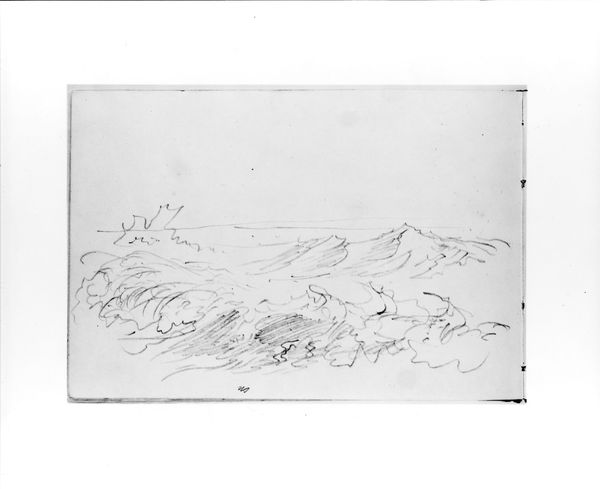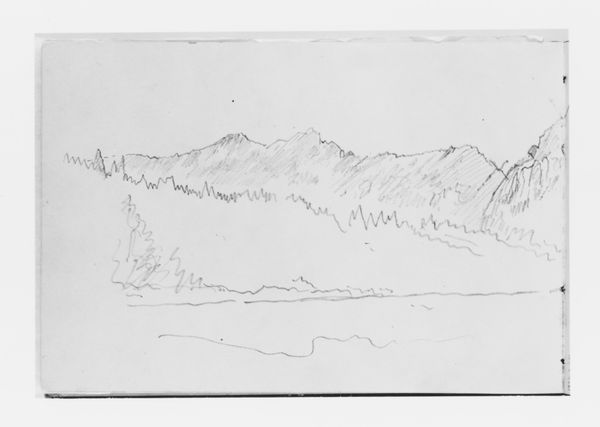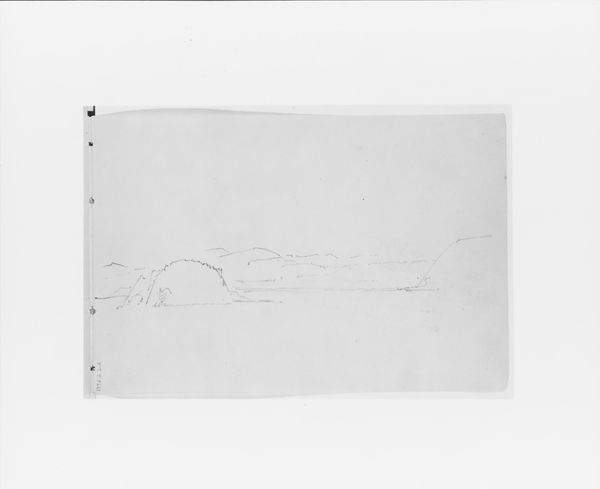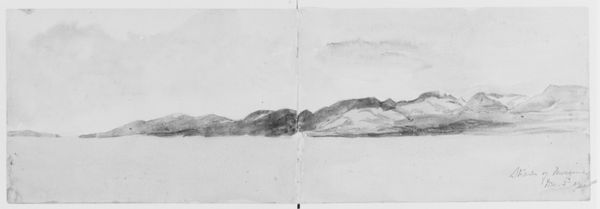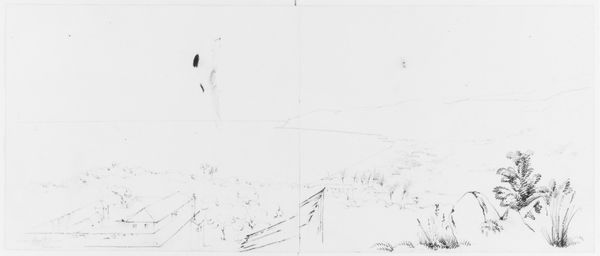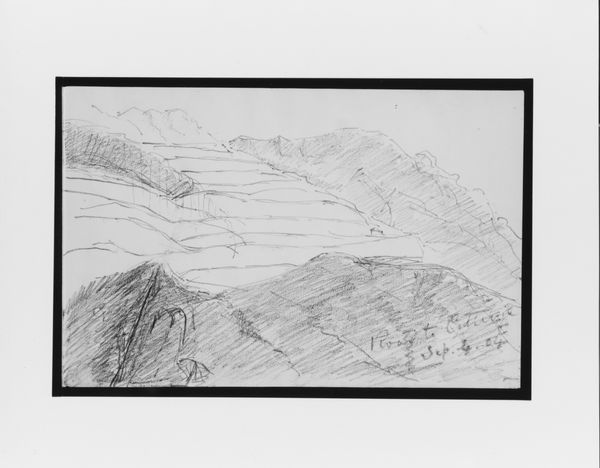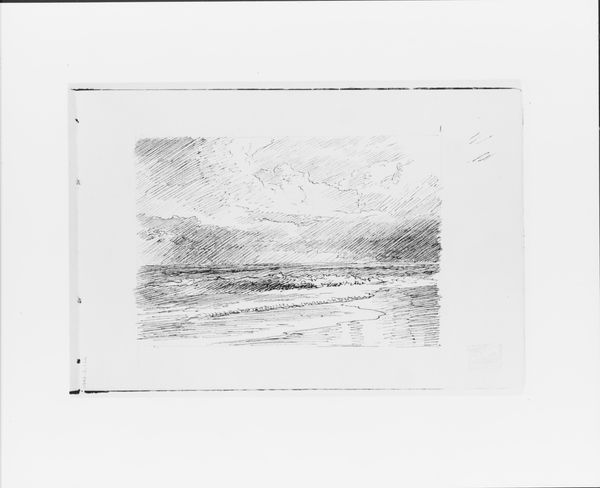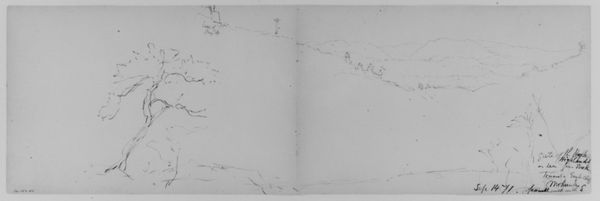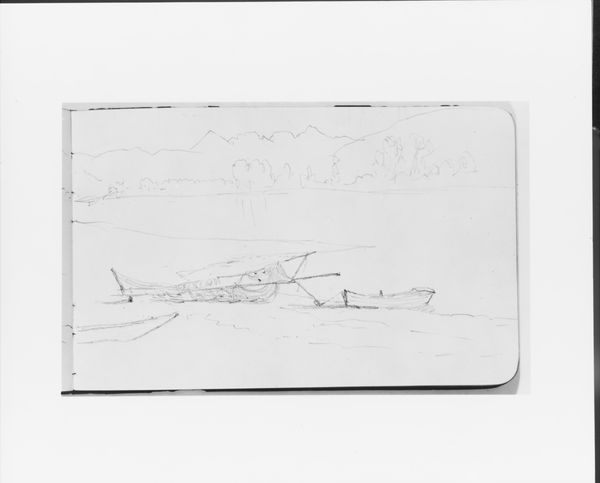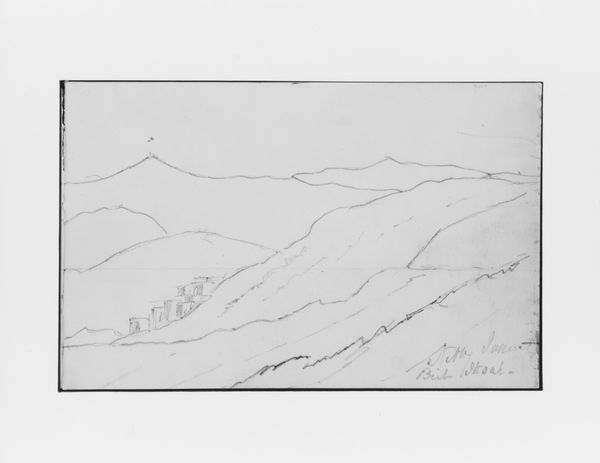
Seascape with Breaking Waves (from Sketchbook VII) 1886
0:00
0:00
drawing, ink
#
drawing
#
landscape
#
ink
#
realism
#
sea
Dimensions: 5 x 7 1/2 in. (12.7 x 19.1 cm)
Copyright: Public Domain
Curator: This is "Seascape with Breaking Waves" from Sketchbook VII, a work rendered in ink by William Trost Richards in 1886. What’s your initial reaction? Editor: Austere, I'd say. It feels like a sketch barely captured before the moment was lost—transient and powerful but…unfinished somehow. Curator: It's compelling to consider that Richards chose the sketchbook and ink as his medium. What impact does that have on your interpretation? Editor: Well, the immediacy of ink suggests he was working directly from life. This wasn't a commission but likely his personal endeavor, perhaps a space for reflecting on the sublime in nature, filtered through a nineteenth-century lens that valued nature and the landscape in unique ways given environmental crises erupting. Curator: Precisely! The ease and portability of ink facilitated his *en plein air* practice, allowing him to swiftly capture atmospheric conditions. Also, you know he actually developed a specific type of drawing paper designed to replicate the texture of his beloved watercolor paper? This reveals his commitment to a consistent and reliable material base for his art production. Editor: That kind of artistic process absolutely resonates with broader social contexts, doesn’t it? I imagine, what kind of social position enables one to focus on a detail like this, even manufacture a drawing paper? Whose labor enables the creation and dissemination of images? It asks who had access to representations of nature, in a rapidly industrializing society, whose landscapes were most often exploited. Curator: That makes me consider whether Richards felt at odds, like a documentarian amidst industrial progress. Ink afforded an ability to capture immediacy but on an economic, personal scale in tension with large canvases. It really invites the viewer to contemplate not only what’s seen, but the act of seeing itself! Editor: Yes, like we are both in medias res with nature and also caught up in networks of capital and its implications. It brings the viewer directly into dialogue with our own assumptions and biases in that nexus. Curator: Beautifully said. The simplicity, combined with this insight into both the materiality of Richards' artistic practice and the context behind the image, helps bring its history into our current landscape. Editor: Absolutely. These are vital layers of interpretation to recognize our place in a long and complicated trajectory of art, nature, and the economy.
Comments
No comments
Be the first to comment and join the conversation on the ultimate creative platform.
